Bainbridge Temple Prepares for Its Final Chapter
Roslyn Palmer worked with the Jewish Community Legacy Project to write Temple Beth El's legacy plan.
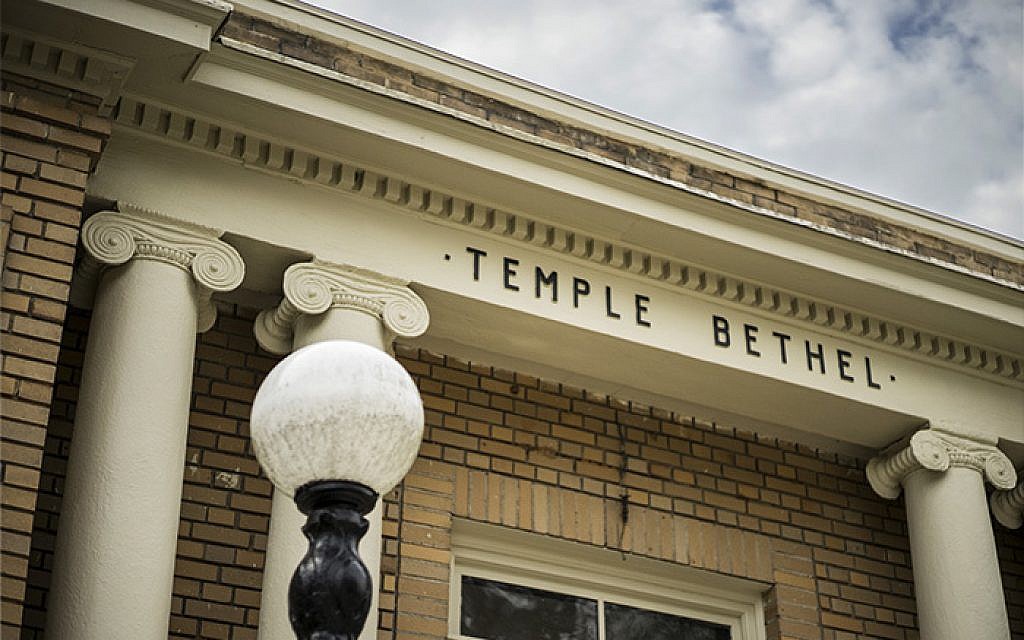
When Roslyn Wolffe Palmer and Joseph “Jody” Grollman were born in Bainbridge in the middle of the last century, the small, but vibrant Jewish community in southwest Georgia congregated at Temple Beth El on weekends. But the community was centered downtown during the rest of the week as Jewish merchants flourished.
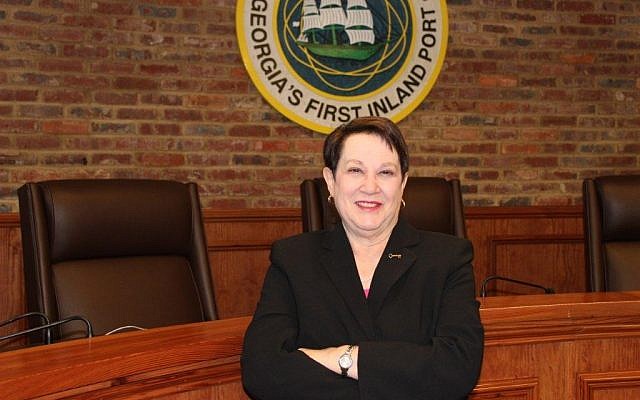
Palmer’s father, Jacob “Jake” Wolffe, initially worked for cousin-owned Wynne’s Department Store, but later opened his own Jake’s Pawn Shop. Grollman’s father was born in Bainbridge. His grandfather peddled merchandise before opening his own retail and shoe business, Grollman’s Department Store, in 1912. Bainbridge residents knew these were Jewish-owned stores: They were closed during the Jewish holidays. Bainbridge Jews were also prominent participants in the community’s civic life. Palmer’s parents were involved in the Lions Club and Red Cross volunteer work.
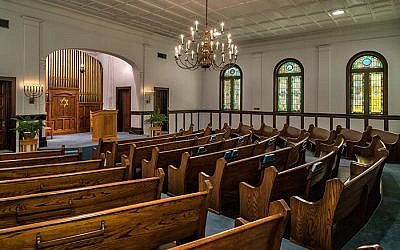
“Growing up in Bainbridge was like Mayberry,” reminisced Grollman, referring to the fictional community in the TV series starring Andy Griffith. “It was a good, simple life. It was a very small Jewish community. Our friends were non-Jewish. We knew we were different, but we never heard any kind of [anti-Jewish] remarks. My father was the president of the chamber of commerce.”
Get The AJT Newsletter by email and never miss our top stories Free Sign Up
Today, Palmer celebrates her 32nd year as a member of the Bainbridge city council. She’s also president – “by default,” she said – of Temple Beth El, a synagogue formally founded in 1902 with the building dedication in 1916. According to the local newspaper, townspeople of all faiths attended the dedication ceremony. One hundred years later, for the centennial anniversary, local people again flooded the synagogue, Grollman said. “We were well-thought-of in the community. People came out of respect.”
But nowadays, Temple Beth El hardly ever has a minyan for services. “If we have a service,” Palmer said, “seven to 12 people come. If we have a dinner, then maybe we get 20 or more because the children and families who aren’t members come.” Although a basement had been added to the one-story building to house a Sunday School, now it’s not used at all.
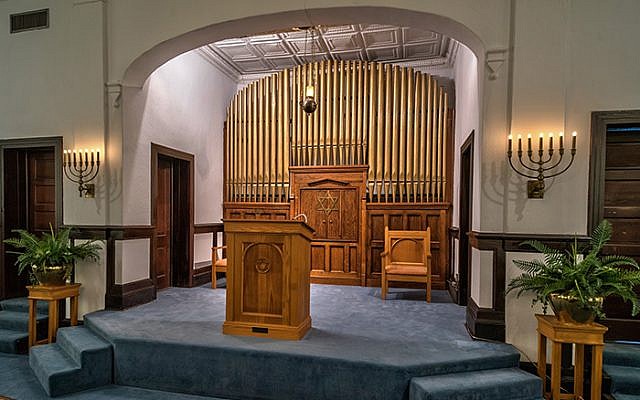
This is a typical scenario, according to Lee Shai Weissbach, professor of history, emeritus, at the University of Louisville and author of “Jewish Life in Small-Town America: A History.” For more than 20 years, he studied small-town American Jewish life, looking for patterns. Of 490 towns, he focused on 12 “and tried to reconstruct what Jewish life looked like.”
Unlike in larger cities, where Jews worked in sweatshops in the early 1900s, the Jews in small towns were shopkeepers, he said. Economic downturns affected the entire populations of small towns, but the impact on the Jewish communities was harsher. Weissbach said a combination of factors led to the diminishing Jewish populations in small towns.
In Bainbridge’s case, Palmer said the fact that many Bainbridge natives in her generation didn’t return to the town after college meant that there was no one to take over family businesses and the “young people aren’t involved in services. That’s where the problem is. I’m the only one who has a grandchild living here. There are no little ones.”
So, Palmer read the writing on the wall. She contacted the Atlanta-based Jewish Community Legacy Project, launched several years ago by former Jewish Federation of Greater Atlanta executives David Sarnat and Noah Levine. Recognizing the growing number of small Jewish communities with declining populations struggling to sustain Jewish life, they started JCLP to help these synagogues plan for their eventual dissolution.
JCLP helps small congregations “find a way to prepare a plan that honorably allows them to leave a legacy as well as make sure their assets go to aspects of Jewish life that were important to them when they were a vibrant congregation,” Sarnat said.
Levine contacted Palmer and worked with the synagogue’s board of directors to write their legacy plan, which was completed in January. “It sounded like a good idea to have our ducks in a row,” Palmer said. “It’s like a practical person would have a will; we decided the Temple needed a will. We decided to continue as long as we can, but at some point, we will sell the building.”
Levine said, “Temple Beth El can take great pride in its legacy plan. The Temple documents have been preserved; oral histories have highlighted the memories and reflections of long-time members; the building has been videotaped; perpetual care of the cemetery is ensured; and donations will benefit both the community of Bainbridge and Jewish interests. This is a model of engaging all members of the congregation under strong Temple leadership that will perpetuate the legacy of one of Georgia’s Jewish historic landmarks.”
The synagogue’s plan lays out the steps for the eventual dissolution of the congregation. After its board sells the building, pays off any debts and closes its doors, remaining funds will be donated to several organizations, most of which are local, Palmer said. Although the exact distribution of those funds has yet to be determined, the board allocated funds to go to the Decatur County Family Connection’s Backpack Program, the Decatur County Historical and Genealogical Society, the First United Methodist Church Food Pantry, the Still Waters Shelter for Women and Children, the Birmingham Holocaust Education Center and JCLP.
Although the congregation wanted to support the local community, it decided to support the Birmingham Holocaust center because Palmer’s cousin is active there and her father was a Holocaust survivor, she said. The board decided to contribute some of its remaining assets to JCLP because “they give so much to small communities and there were no expenses on our part.”
The board will review its contributions every January “to see if those six organizations are still viable choices. Something could change, and we want to make sure we’re on target,” she said.
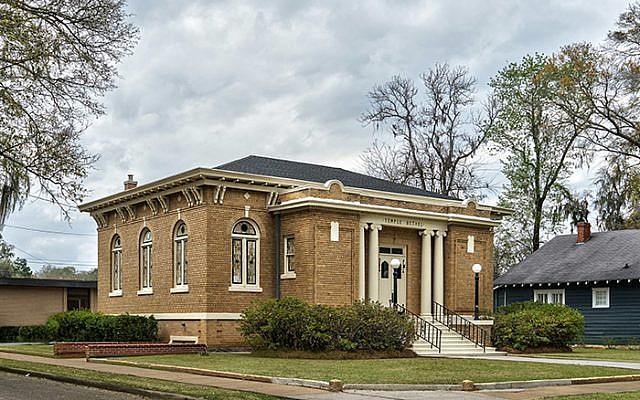
While selecting the destinations for a congregation’s final assets is not easy, many small-town Jewish communities have an even harder time facing a future whose end is in sight, Levine said. Oftentimes, there are only a couple of elderly Jews remaining in a town to make the final decisions about a synagogue’s dissolution. That’s why JCLP has filled such an important niche, he said.
So far, 16 JCLP congregations have closed. Thirteen congregations have completed their legacy plans and are still vibrant. Another 37 JCLP congregations are in the legacy planning process. None of those are planning to close, but they see the importance of long-range planning, Levine said.
This is the first in a series of articles about Jewish life in small towns, sponsored by Atlanta-based Jewish Community Legacy Project. In the Aug. 30 “Atlanta Then and Now” issue, Atlantans from Bainbridge will compare their lives growing up in a small town with life today in the big city.



comments